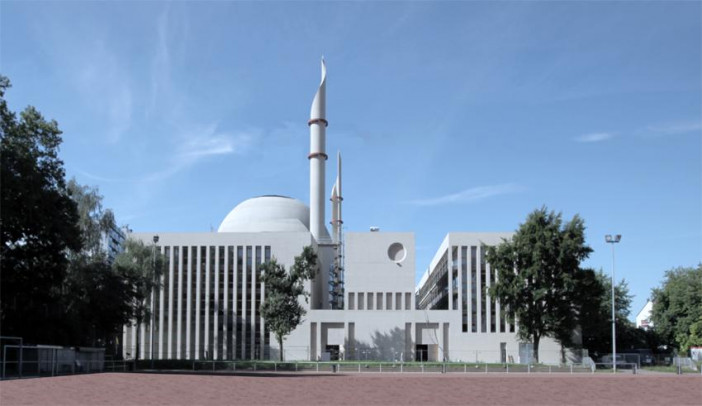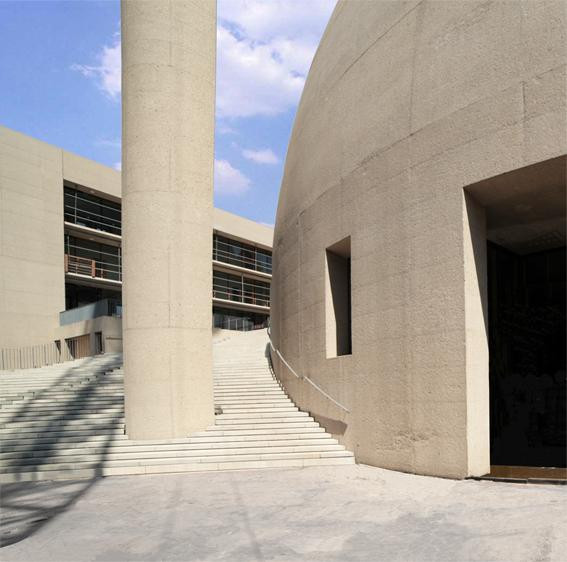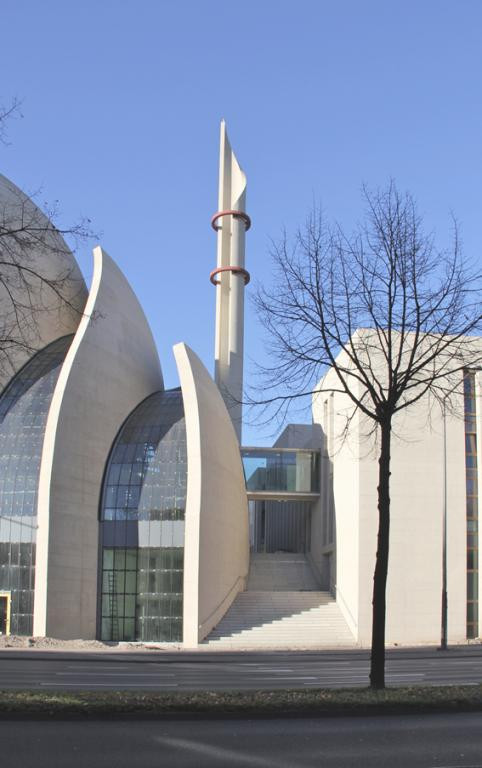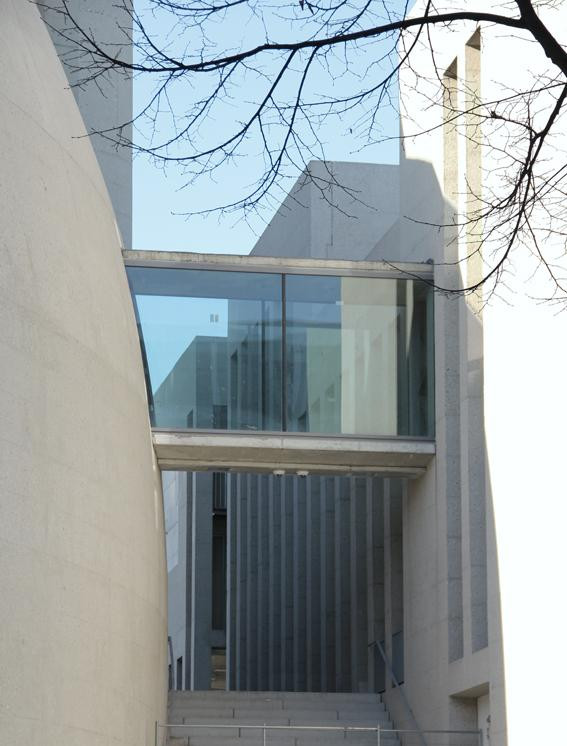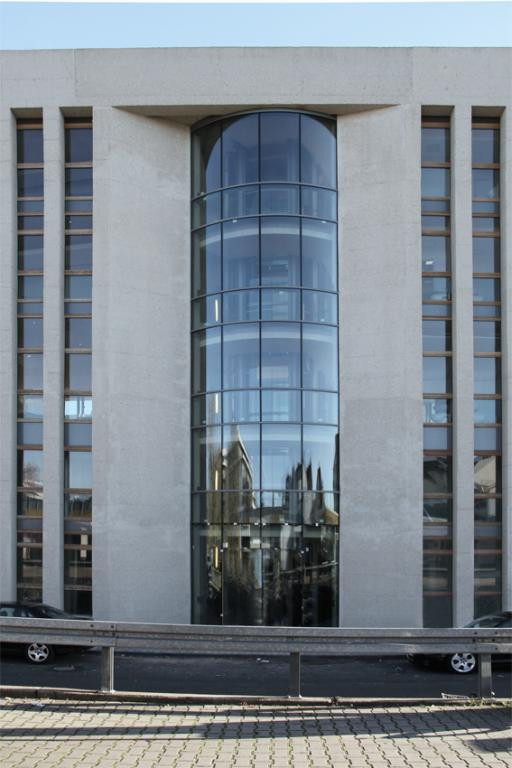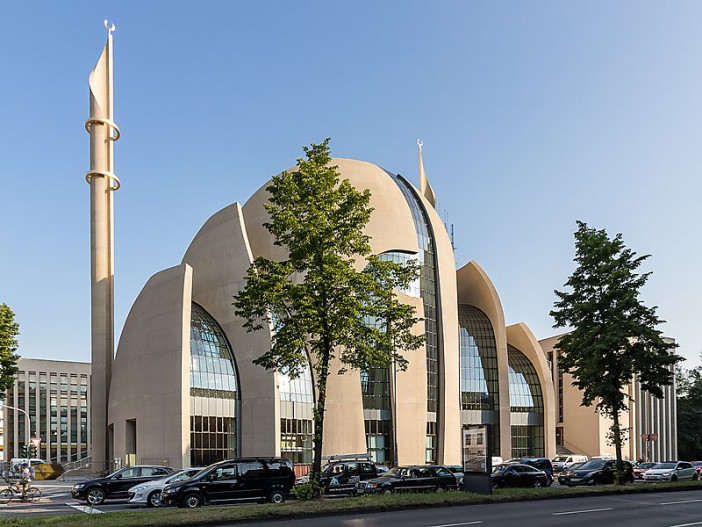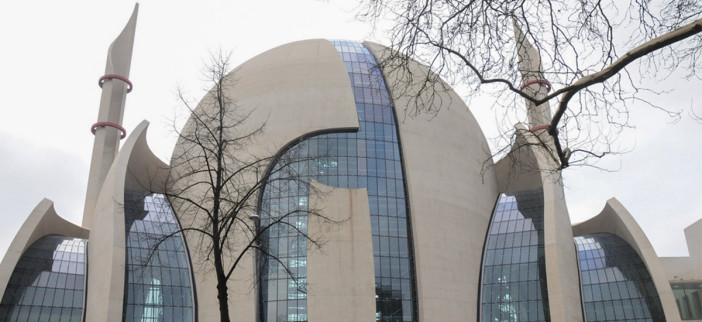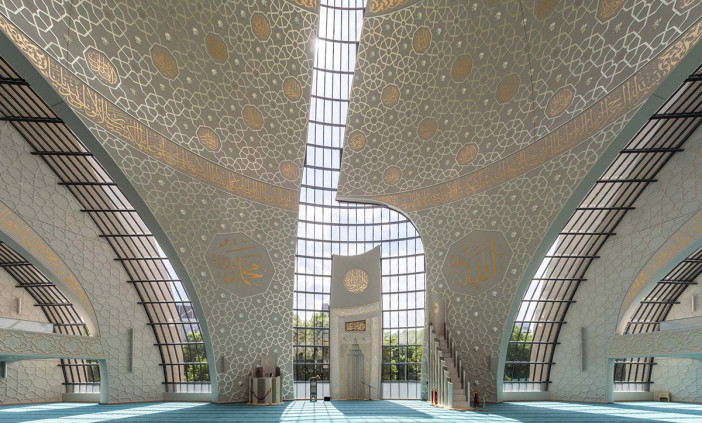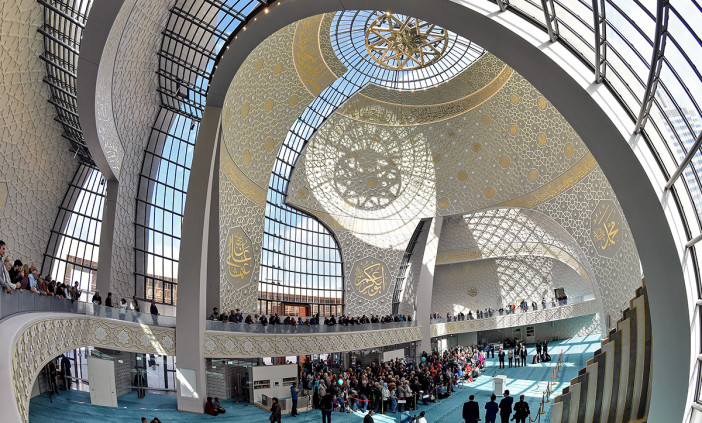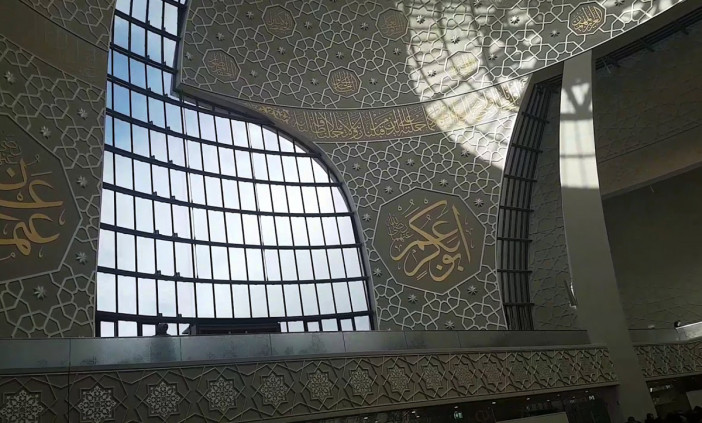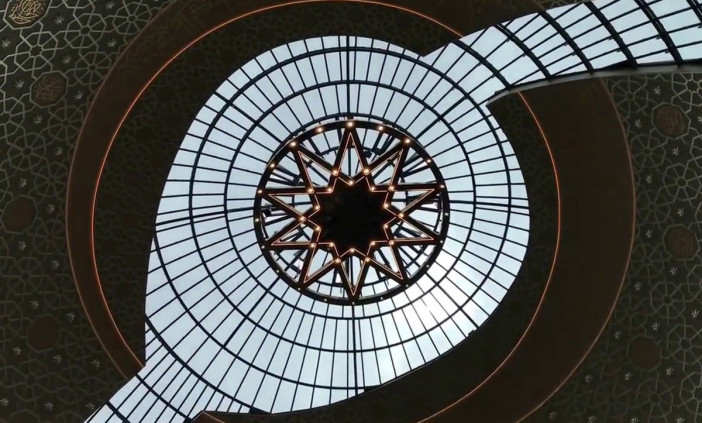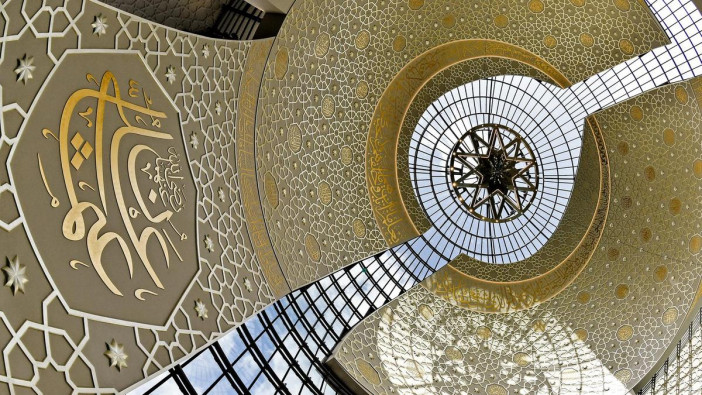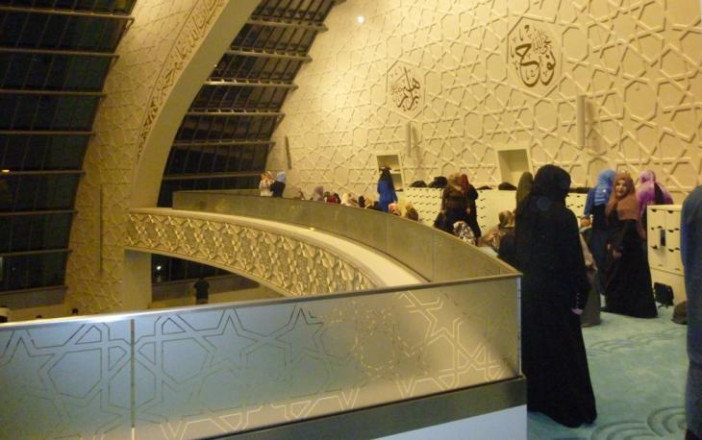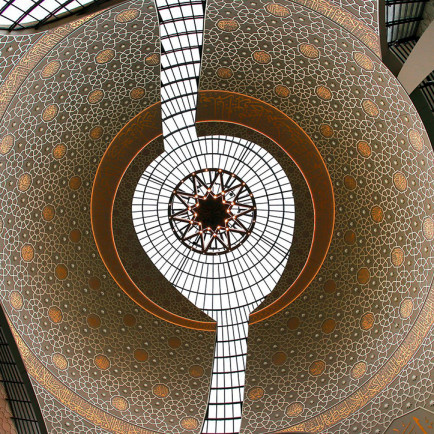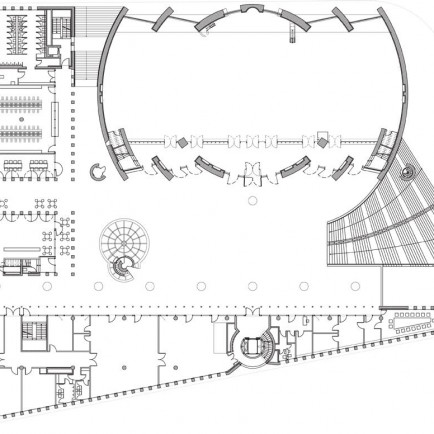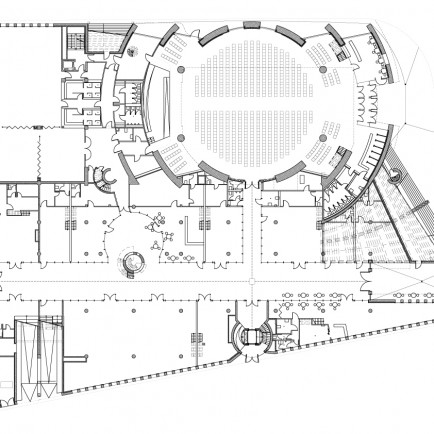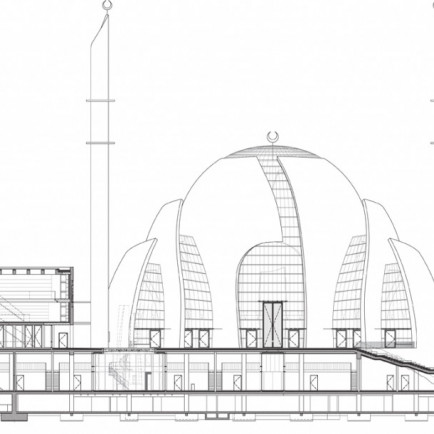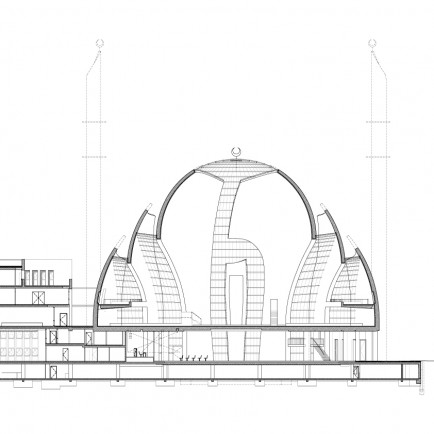Cologne Central Mosque
History
20
years old Turkish Turks in Cologne dreamed of building a qualified mosque. This
plan only began to be realized in 2009 but had faltered in 2011 due to the
emergence of the refusal of anti-immigrant citizens. A poll by local newspapers
revealed that 63% of the residents actually support the building of the mosque,
but 27% want to reduce the size of the mosque. An estimated 4.7 million
Muslims, the majority of whom are Turkish, live in Germany. In Cologne, a city
of about 10 million, there are 70 mosques available to about 120,000 Muslims.
Usually this mosque is located in a remote corner. But unlike the other mosques,
Cologne Mosque is located in Ehrenfeld, a corner of the city commonly known as
one of the cultural centers in Cologne. The mosque was built in 2009 and
is the largest and grandest mosque in Germany. Cologne mosque is now regarded
as a symbol of integration and symbol of the birth of German mosque
architecture. Cologne Central Mosque (Zentralmoschee Köln) measuring 4500 m2 is
able to accommodate 1200 worshipers. This is what makes Cologne Mosque
considered the largest mosque in Germany. The mosque, built by the Turkish
Muslim organization DiTiB, features libraries, courses, seminars, sports
centers, offices and shops.
Description
The mosque is mainly characterized by the large dome. This is formed by four large bowls that protectively protect the sacred precinct like abstract hands. It was a concern that the round of the dome in the hall and even in the underground car park is recognizable. The construction forms a group around a courtyard which opens to Venloer Strasse. In each room visitors should feel in which particular district they are, in which the spirit of the prayer room runs through the entire space. A wide stairway connects the two main levels. The street level contains the bazaar and the event hall entrance.
The mosque can be opened all the way to the courtyard, and the adjacent conference area with the reception room can also be connected to the mosque for special occasions. The spacious bar along the mosque houses the administration wing on the upper floors and a part of the bazaar in the ground floor laps. Without wishing to be in the foreground, the administrative building seal blends in homogeneously with the coupling mechanism. All entrances to the mosque are situated on the higher level`s yard, which serves as a meeting point for the complex. From here one can also reach the other functional areas as library, classrooms and administration.
There is a fountain to the center of the yard, which connects the two main levels again and creates a pleasant atmosphere. The complex is mainly characterized by the praying hall, which consists of several shell-like walls. In the center these walls build a light-flooded dome. Like the Sultan Ahmed Mosque in Turkey, the mosque in Cologne also presents a distinctive blue appearance. Modern atmosphere seen through the design of glass that blends on the wall. Modern Islamic impression is also visible from the writing of gold calligraphy in the mosque. “Open” and “bright”, a piece of commentary that describes Paul Böhm’s mosque.The building of the mosque is designed to be transparent by using glass that features natural lighting. However, not just a physical form, the mosque is also open to the citizens of different religions.
The goal is that Cologne Mosque can bridge inter-religious communication in Germany. The design of the mosque is also considered “very German” because it is able to create a breakthrough in the field of architecture houses of worship that marries the architecture of the Ottoman-era Turkish mosque with a typical European-style architecture. Two towers of the Cologne Mosque had become a topic of debate because it was thought to be changing the image of the city and “shadowing” Cologne Cathedral tower. Gothic church is recognized by UNESCO as a world cultural heritage so that the city planning around the cathedral should be maintained its originality. Cologne’s mosque tower was built as high as 55 meters – or 1/3 of the 157 meters peak Cologne Cathedral.
The German language course for pilgrims is one of eight requirements based on integration that are required for Cologne Mosque to be built. Priests must also be proficient in German, as they are required to preach in a language that all visitors understand. In addition, equality of treatment for women and men is also an important point of the prerequisites.
Details
الموقع
50823 Köln, Germany
عدد المصليين
1200
المالك / المتبرع
Turkish Muslim organization DiTiB
المعماري
تاريخ البناء
2017
Area
4500 SQM
الرسومات المعمارية
الخريطة
History
20
years old Turkish Turks in Cologne dreamed of building a qualified mosque. This
plan only began to be realized in 2009 but had faltered in 2011 due to the
emergence of the refusal of anti-immigrant citizens. A poll by local newspapers
revealed that 63% of the residents actually support the building of the mosque,
but 27% want to reduce the size of the mosque. An estimated 4.7 million
Muslims, the majority of whom are Turkish, live in Germany. In Cologne, a city
of about 10 million, there are 70 mosques available to about 120,000 Muslims.
Usually this mosque is located in a remote corner. But unlike the other mosques,
Cologne Mosque is located in Ehrenfeld, a corner of the city commonly known as
one of the cultural centers in Cologne. The mosque was built in 2009 and
is the largest and grandest mosque in Germany. Cologne mosque is now regarded
as a symbol of integration and symbol of the birth of German mosque
architecture. Cologne Central Mosque (Zentralmoschee Köln) measuring 4500 m2 is
able to accommodate 1200 worshipers. This is what makes Cologne Mosque
considered the largest mosque in Germany. The mosque, built by the Turkish
Muslim organization DiTiB, features libraries, courses, seminars, sports
centers, offices and shops.
Description
The mosque is mainly characterized by the large dome. This is formed by four large bowls that protectively protect the sacred precinct like abstract hands. It was a concern that the round of the dome in the hall and even in the underground car park is recognizable. The construction forms a group around a courtyard which opens to Venloer Strasse. In each room visitors should feel in which particular district they are, in which the spirit of the prayer room runs through the entire space. A wide stairway connects the two main levels. The street level contains the bazaar and the event hall entrance.
The mosque can be opened all the way to the courtyard, and the adjacent conference area with the reception room can also be connected to the mosque for special occasions. The spacious bar along the mosque houses the administration wing on the upper floors and a part of the bazaar in the ground floor laps. Without wishing to be in the foreground, the administrative building seal blends in homogeneously with the coupling mechanism. All entrances to the mosque are situated on the higher level`s yard, which serves as a meeting point for the complex. From here one can also reach the other functional areas as library, classrooms and administration.
There is a fountain to the center of the yard, which connects the two main levels again and creates a pleasant atmosphere. The complex is mainly characterized by the praying hall, which consists of several shell-like walls. In the center these walls build a light-flooded dome. Like the Sultan Ahmed Mosque in Turkey, the mosque in Cologne also presents a distinctive blue appearance. Modern atmosphere seen through the design of glass that blends on the wall. Modern Islamic impression is also visible from the writing of gold calligraphy in the mosque. “Open” and “bright”, a piece of commentary that describes Paul Böhm’s mosque.The building of the mosque is designed to be transparent by using glass that features natural lighting. However, not just a physical form, the mosque is also open to the citizens of different religions.
The goal is that Cologne Mosque can bridge inter-religious communication in Germany. The design of the mosque is also considered “very German” because it is able to create a breakthrough in the field of architecture houses of worship that marries the architecture of the Ottoman-era Turkish mosque with a typical European-style architecture. Two towers of the Cologne Mosque had become a topic of debate because it was thought to be changing the image of the city and “shadowing” Cologne Cathedral tower. Gothic church is recognized by UNESCO as a world cultural heritage so that the city planning around the cathedral should be maintained its originality. Cologne’s mosque tower was built as high as 55 meters – or 1/3 of the 157 meters peak Cologne Cathedral.
The German language course for pilgrims is one of eight requirements based on integration that are required for Cologne Mosque to be built. Priests must also be proficient in German, as they are required to preach in a language that all visitors understand. In addition, equality of treatment for women and men is also an important point of the prerequisites.


